We’re excited to have local adventurer and writer Tricia Kyzer back for more Winter Wanders.
Photos and Story by Tricia Kyzer
For most people Valentine’s Day is marked by bouquets of roses, cardboard hearts filled with chocolates and the romantic mix tapes of Sam Smith, John Mayer and maybe a little Etta James to spice things up.
For me, Valentine’s Day is marked by bouquets of trout lilies bursting from the creek banks and the sultry songs of amorous wood frogs calling from ephemeral February pools tucked deep in mountain coves. Yes, love is in the air and a Valentine’s Day wander in our mountains will be sure to yield both.
And love always hopes.
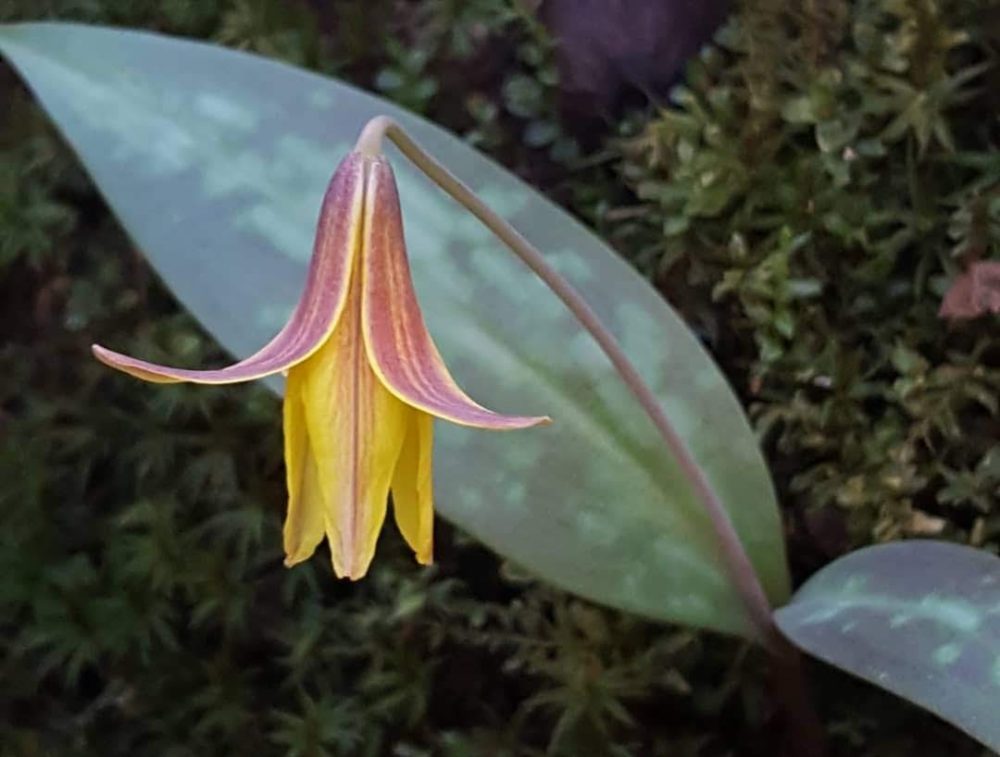
It is perfect timing that one of my favorite winter wanders comes in February. As the winter season unravels, daylight begins to linger just a little while longer and hope pushes through the soil (and sometimes the snow) in the starry shape of a lily.
Trout lilies, Eythronium americanum, are one of the first foreshadowings of the coming spring. Be still my beating heart!
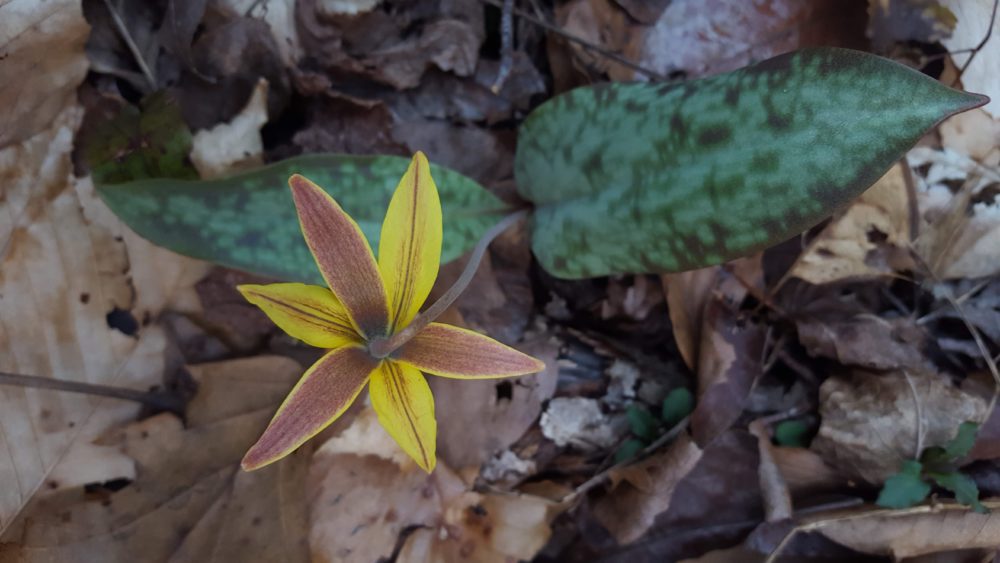
Trout lilies are just the hope I need to get me through this final stretch of a Southern Appalachian winter. The winter wonders I was reveling in earlier are beginning to wear thin. The long dark days have gotten a little less long and a little less dark. But the air is still icy and the woods are still dominated by neutral colors There are certainly some cold, dark days still ahead. But here on the frozen ground is this golden star of hope.
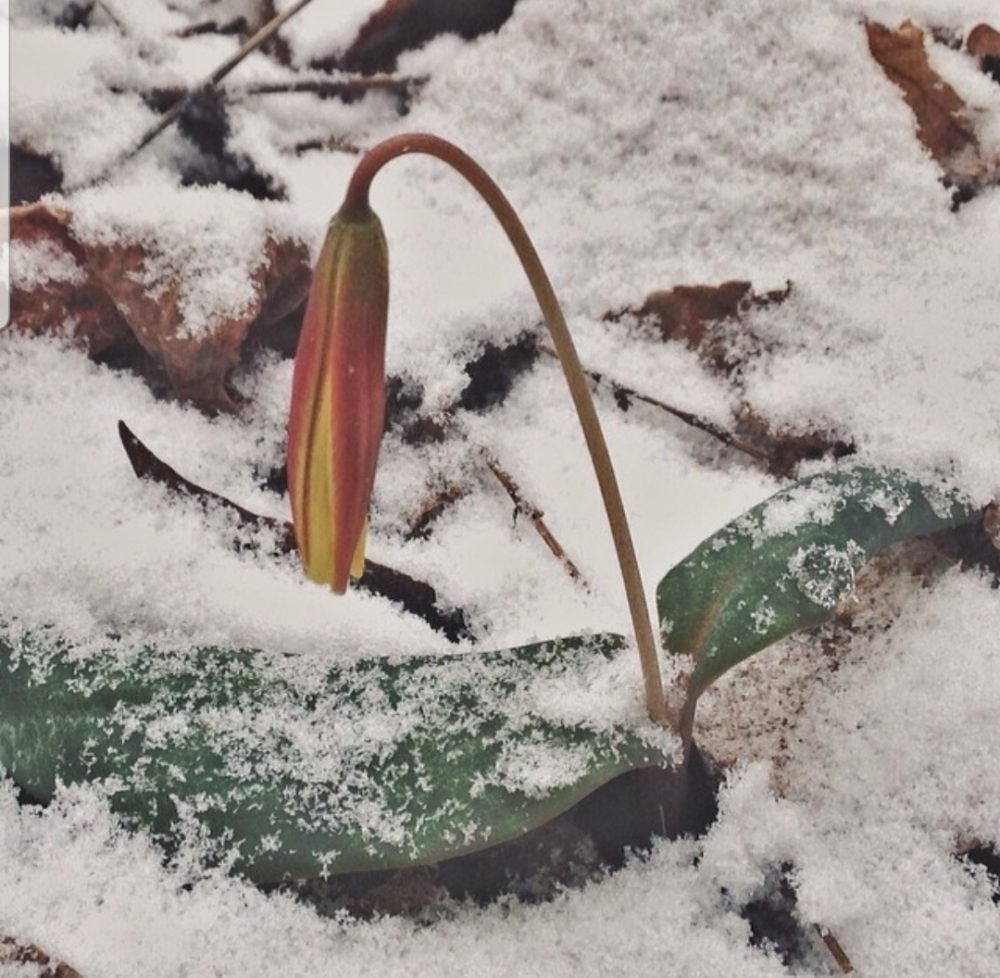
A reminder that the darkness is only temporary and there will always be light.
Trout lilies get their common name from their location, often right next to a trout stream, and their mottled leaves that resemble a trout shimmering underwater. Some mountain folks also call them dog tooth lilies because their corm (the tuber-like bulb they grow from) is shaped like a canine tooth. This corm is actually edible before the leaves fully unfurl. But unless the trout lily patch is extremely abundant, it is not recommended to remove. It can take a trout lily as long as seven years of slow and steady growth before it entrusts the landscape with its faithful flowers. So tread carefully and honor this bloom by taking only photographs.
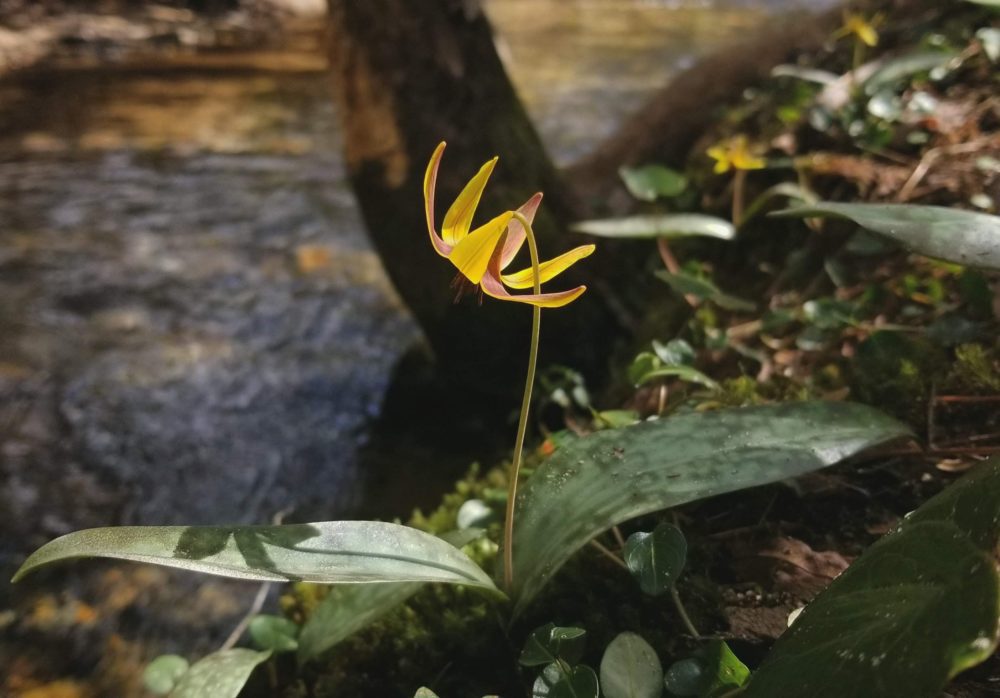
If you listen carefully while you are visiting the trout lilies, somewhere beyond the sound of the gurgling stream, you may catch the heartfelt, turkey-like, clucking sound of a calling male wood frog in a nearby pool of still water. This terrestrial frog is calling all local females of its kind to the pools for some winter love. The fertilized eggs are deposited in insulated piles where they will grow and mature.

It is cold in February, but the wood frogs are not afraid. These mountains are their southernmost range. They are found all the way up to the arctic tundra where they have an uncanny ability to freeze solid and thaw when conditions are warm again. Cold feet, warm heart, right?
If you want to win your sweetheart over with some local romance, take them on a romantic winter wander to the nearest trout stream. Let the waters and the wood frogs serenade them while the trout lilies bring them the promise of a warmed heart to finish out winter.
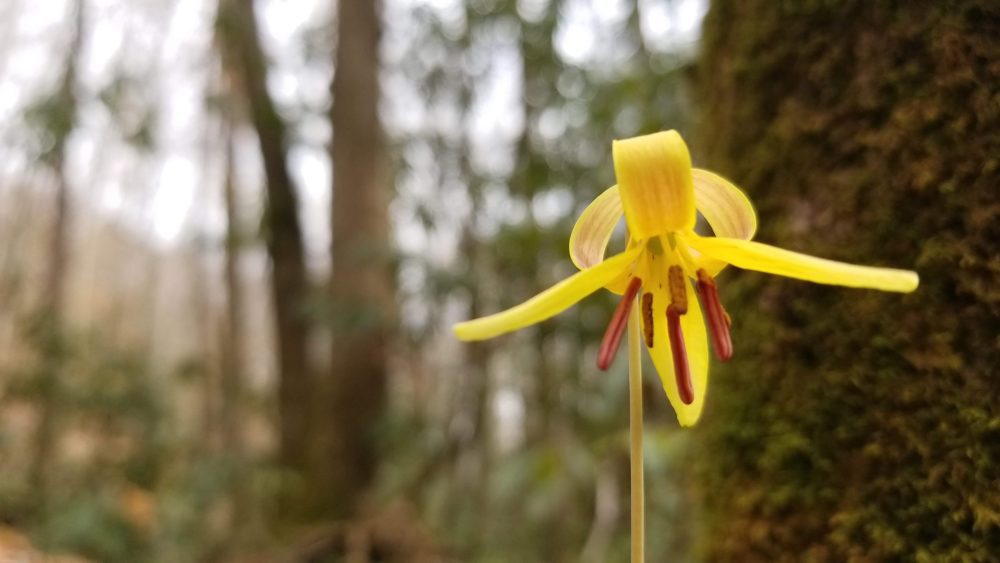
Local trout lily spottings: Anywhere there is a good, cold mountain stream.
Local wood frog spottings: Small temporary pools and shallow ponds in the mountains.
______________________________________
For more Winter Wanders by Tricia Kyzer, click right here.
Follow Tricia Kyzer on Instagram at Blue Wall Wanderer for more gorgeous adventures.




